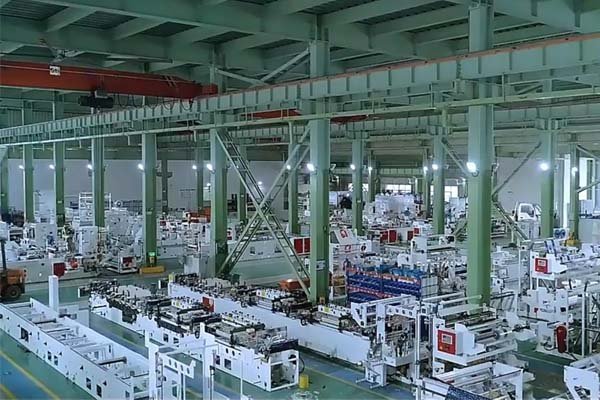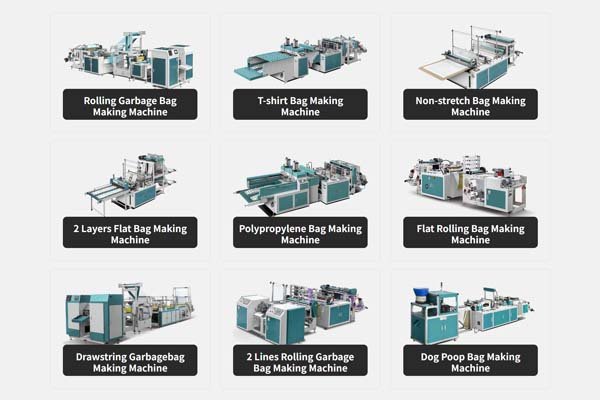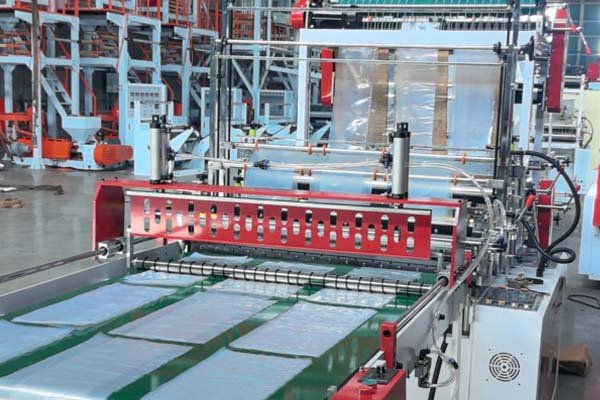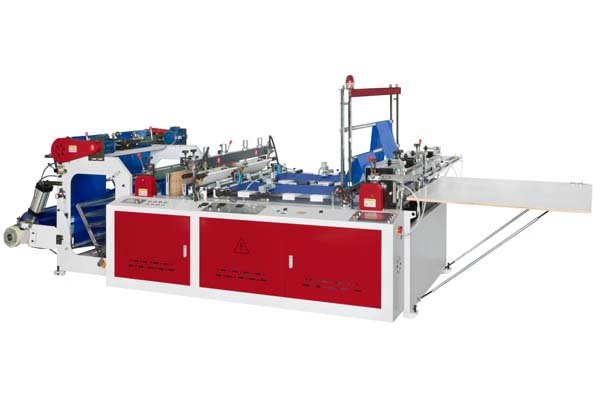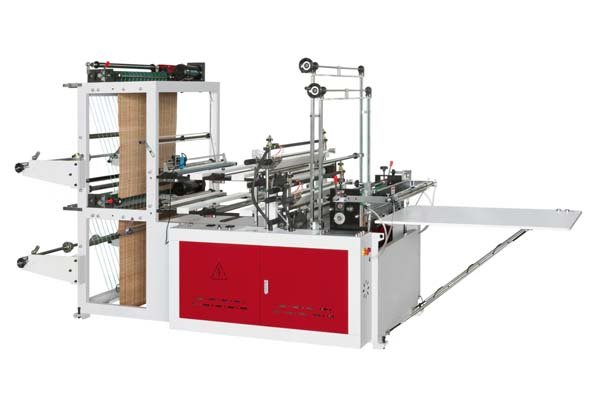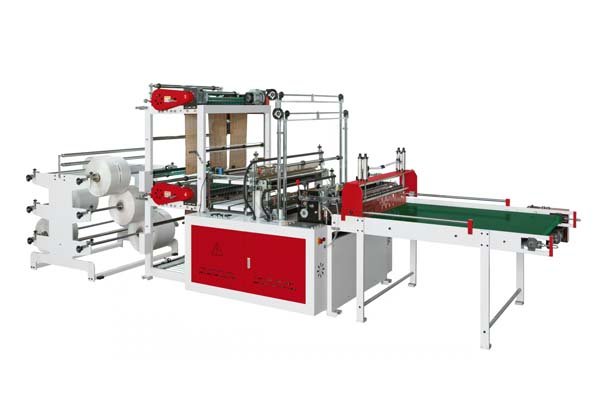
Manually controlling the blow-up ratio leads to inconsistent film quality and material waste1. This instability directly impacts your production costs and bag performance. Modern machines solve this problem with automated systems that ensure precision and efficiency.
Yes, the blow-up ratio (BUR) can be automatically adjusted. Modern film-blowing machines use automated control systems equipped with sensors, a PLC, and an air regulation unit. These elements work together to monitor and maintain the desired BUR in real-time, guaranteeing stability.
At BagMec®, we've seen how crucial a stable bubble is for producing high-quality film. An automatic BUR control system2 is the key. It constantly measures the bubble's diameter as the film is extruded. This information is sent to a central computer, the PLC. The PLC then compares the actual size to the size you set. If there's a difference, the PLC automatically tells an air valve to let more or less air into the bubble. This all happens instantly and continuously, keeping the blow-up ratio perfectly consistent.
This process eliminates the guesswork and constant manual tweaks required in older systems. The result is a more stable production run from start to finish. You get uniform film thickness, which leads to stronger, more reliable bags. It also dramatically reduces the amount of scrap material produced during startups and changeovers. In short, automation turns an art into a science, giving you repeatable, high-quality results every time.
What Components Make Up an Automatic BUR Control System?
So, you know automation is possible. But what are the key parts that make this technology work inside a machine?
An automatic BUR control system primarily includes non-contact sensors, a central Programmable Logic Controller (PLC)3, and a precision air control valve. These components measure the bubble, process the data, and execute adjustments to the airflow, forming a closed-loop system.

Let's look deeper into how each part contributes to a flawless production process. This technology isn't just one piece of hardware; it's a team of components working in perfect sync.
The Sensors: The Eyes of the System
The first step is measurement. To control the bubble's size, the system needs to know its current diameter accurately and without touching it. This is where non-contact sensors come in.
- Ultrasonic Sensors: These are the most common type we use at BagMec®. They send out sound waves that bounce off the film bubble and return. The system calculates the distance based on the travel time, giving a precise diameter reading.
- Infrared (IR) or Laser Sensors: For a higher degree of precision, some systems use light-based sensors. They offer extremely accurate measurements and are ideal for producing very thin or specialized films.
The PLC: The Brain of the Operation
The Programmable Logic Controller (PLC) is the central processing unit. It receives the constant stream of data from the sensors.
- Data Processing: The PLC’s main job is to compare the real-time bubble diameter to the desired setpoint that your operator entered into the control panel.
- Decision Making: If the PLC detects a deviation—for example, the bubble is slightly too large or too small—it instantly calculates the exact correction needed. We integrate robust PLCs from world-class brands to ensure our machines perform this task reliably 24/7.
The Air Control Unit: The Hands of the System
The PLC's decision needs to be put into action. This is the job of the air control unit. This unit consists of a motorized valve connected to the air supply for the die head. When the PLC sends a command, this valve makes a micro-adjustment, either increasing or decreasing the volume of air flowing into the bubble to bring it back to the target size.
Here’s a simple breakdown of how these parts work together in our machines:
| Component | Primary Function | How We Implement It at BagMec® |
|---|---|---|
| Sensors | To measure the bubble diameter continuously. | We integrate high-precision ultrasonic sensors for consistent and reliable readings. |
| PLC | To process sensor data and decide on adjustments. | Our machines use powerful PLCs that support our "Smart Tension Control" for total film stability. |
| Air Control Unit | To execute the PLC's commands by adjusting airflow. | We use fast-reacting, precision valves that ensure immediate and accurate bubble size correction. |
| HMI | To allow operators to set parameters and monitor the process. | Our systems feature intuitive, multi-language touchscreens with remote diagnostic capabilities. |
How Does Automatic BUR Control Impact Material Costs and Efficiency?
Technology is great, but how does it actually help your business's bottom line? Let's talk about the real-world impact on cost and output.
Automatic BUR control directly lowers material costs by ensuring consistent film thickness, which eliminates the need to over-gauge. It also boosts production efficiency by enabling higher speeds, reducing startup waste, and requiring less manual supervision.
Diving deeper, the financial benefits are clear and significant. Shifting from manual to automated control is one of the most effective ways to improve your operational profitability.
Drastically Reduced Material Waste
With manual control, operators often make the film thicker than necessary just to be safe. This practice, known as "over-gauging," wastes a huge amount of raw material over time.
- Consistent Gauge: An automated system maintains film thickness with incredible precision (e.g., ±2% tolerance). This allows you to run your film at the exact target thickness without fear of weak spots. One of our German clients reduced their material waste by 18% after deploying our automated machines.
- Less Startup Scrap: The system stabilizes the bubble much faster during startup, meaning less material ends up as scrap before you start producing good-quality film.
Higher Production Output
A stable bubble is a prerequisite for high-speed production. When the BUR is constantly fluctuating, you have to run the machine slower to prevent the bubble from collapsing.
- Increased Line Speed: With automation keeping the bubble perfectly stable, you can increase the line speed safely. This means more bags produced per hour. Our high-speed T-shirt bag machines, for example, can leverage this stability to reach outputs of up to 1,200 bags/hour.
A Quick Comparison
| Metric | Manual Control | Automatic Control (BagMec®) | Your Financial Benefit |
|---|---|---|---|
| Material Waste | 5–10% | Under 2% | Major reduction in raw material costs. |
| Labor Requirement | Constant operator attention. | Minimal supervision needed. | Frees up skilled labor for other valuable tasks. |
| Film Consistency | High variability (±10%). | Highly consistent (±2%). | Better product quality and brand reputation. |
| Production Speed | Lower and variable. | Higher and consistent. | More output and revenue per shift. |
Is This Technology Standard or an Optional Add-On?
You see the benefits. Now you're probably asking if this advanced feature is included by default or if it's something extra you have to pay for.
For high-performance machines intended for precise applications like food or medical packaging, automatic BUR control is now a standard feature. However, for more basic or cost-sensitive machinery, it is often offered as an optional upgrade to provide flexibility.
The answer depends on the machine's intended application. At BagMec®, we tailor our equipment to fit specific industry needs and budgets.
When We Include It as Standard
For any application where precision is non-negotiable, we build this technology right in. This includes:
- Lamination Pouch Making Machines: These require perfect film properties for sealing and barrier performance.
- FFS (Form-Fill-Seal) Bag Machines: Consistency is vital for packaging food or pharmaceuticals safely.
- Wicketer Bread Bag Machines: High speeds and thin films demand the utmost stability.
For these machine types, manual control is simply not an option if you want to meet modern quality standards. Our customers in these sectors, like the German packaging supplier who achieved 99% uptime, rely on this built-in automation.
When It's a Smart Upgrade
For other applications, the primary focus might be on balancing cost and capability. In these cases, we offer automatic BUR control as a powerful, value-adding option.
- T-Shirt Bag Making Machines: While our high-speed models benefit from it, a smaller operation might start with a more basic setup.
- Garbage Bag Machines: Depending on the required thickness and material (virgin vs. recycled), you can choose whether to add automation.
- Patch Handle Bag Making Machines: These are often our most accessible models, with prices starting from $8,500. Adding automation is a popular upgrade for customers looking to scale up their quality.
Ultimately, the choice is yours. We are here to provide a free engineering consultation to help you decide. We will analyze your production goals, material types, and budget to recommend the perfect configuration for your business.
Conclusion
Yes, automatic blow-up ratio control is a proven technology that transforms film production. It delivers better consistency, reduces waste, and boosts efficiency. At BagMec®, this feature is a cornerstone of our high-performance machines, helping our partners achieve superior results and profitability.
-
Discover strategies to minimize material waste through automation, improving sustainability and cost-effectiveness. ↩
-
Explore this link to understand how automatic BUR control systems enhance film production efficiency and quality. ↩
-
Learn about PLCs and their critical role in automation, ensuring precision in manufacturing processes. ↩

